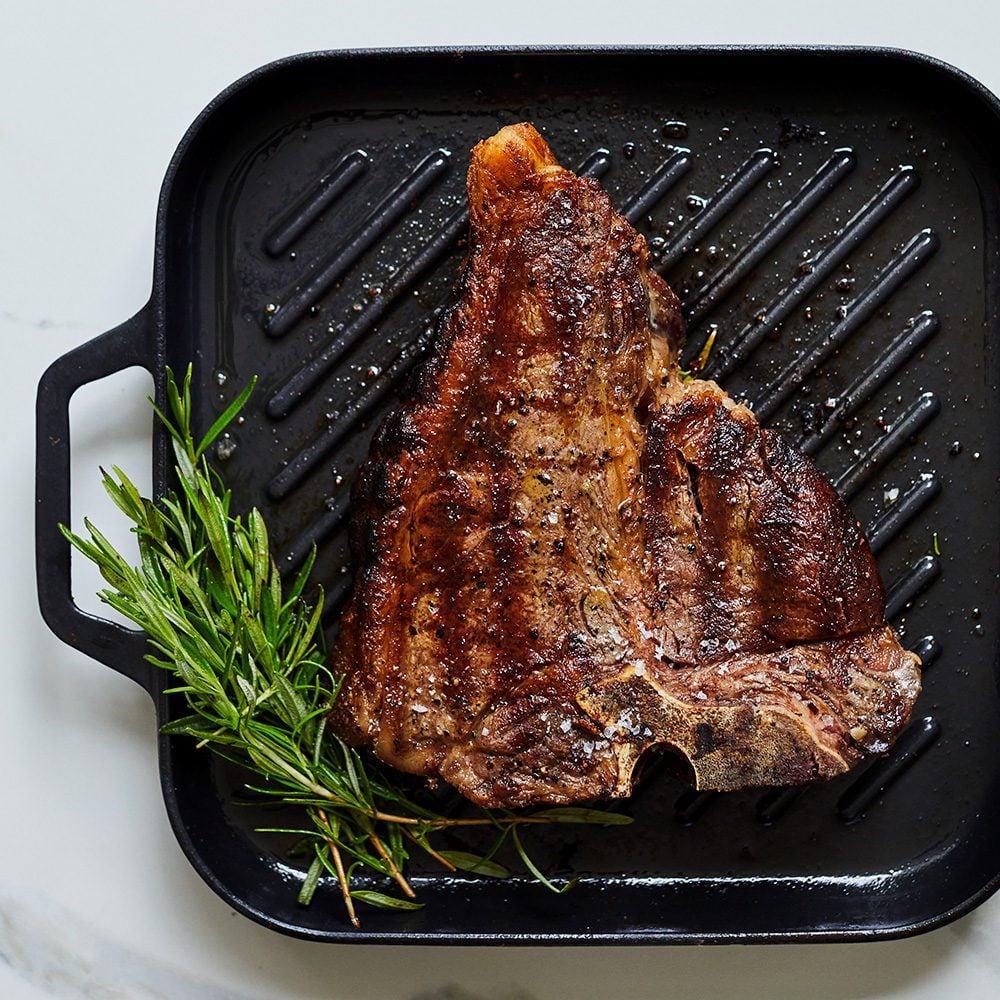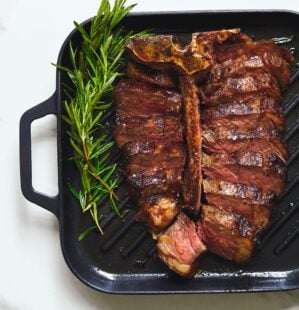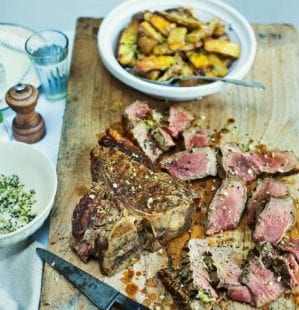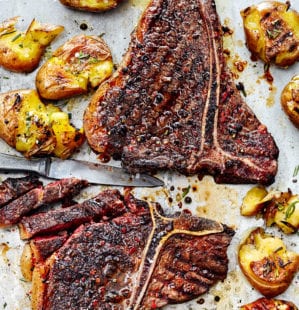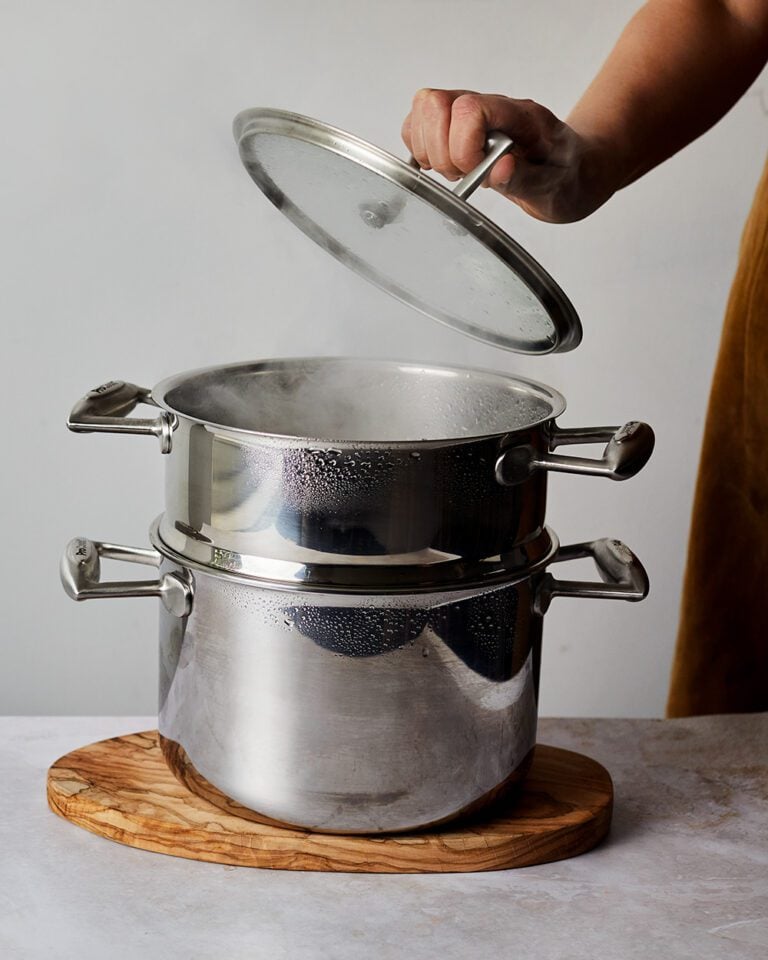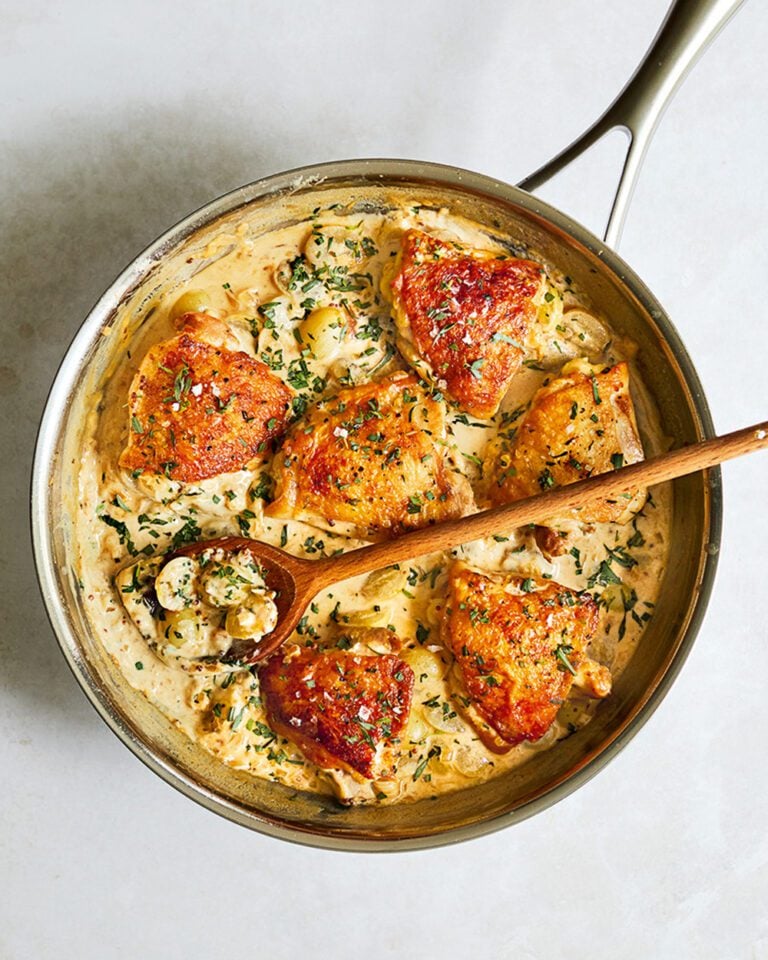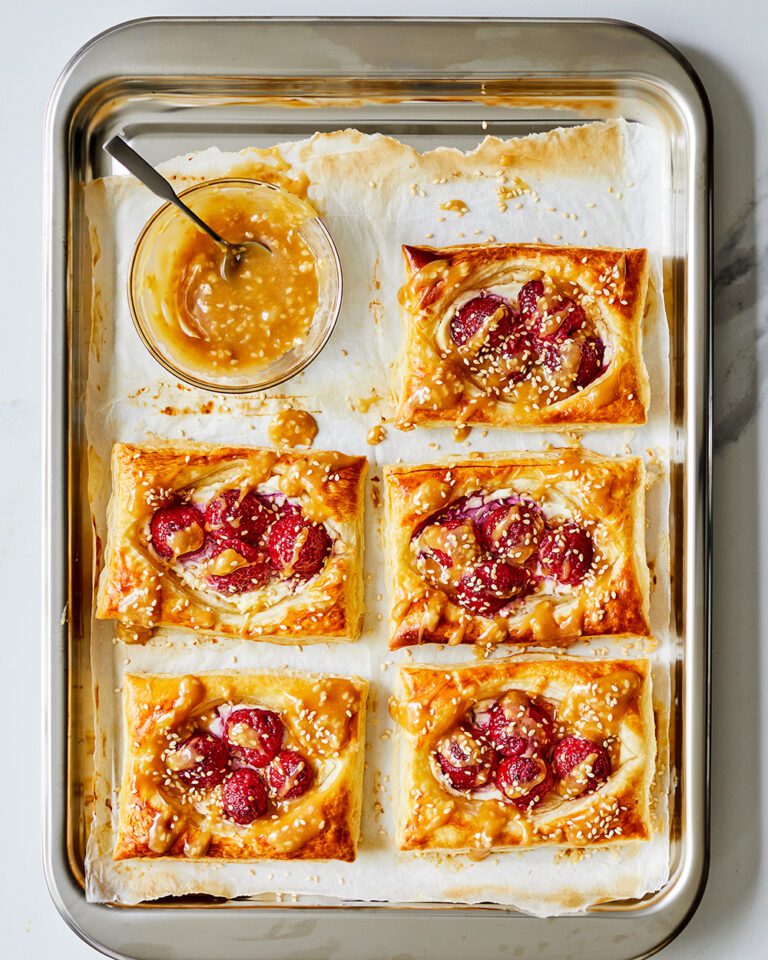
Everything you need to know about cooking with cast iron
The enamelled cast-iron griddle, says head of food Tom Shingler, is the best thing to happen to steak since salt. You may well already own an enamelled cast iron casserole dish, too – but what exactly is enamelled cast iron, and what makes it so darned good? Here’s Tom’s lowdown, plus a classic Italian recipe cooked on a ProCook griddle that makes full use of its powers.
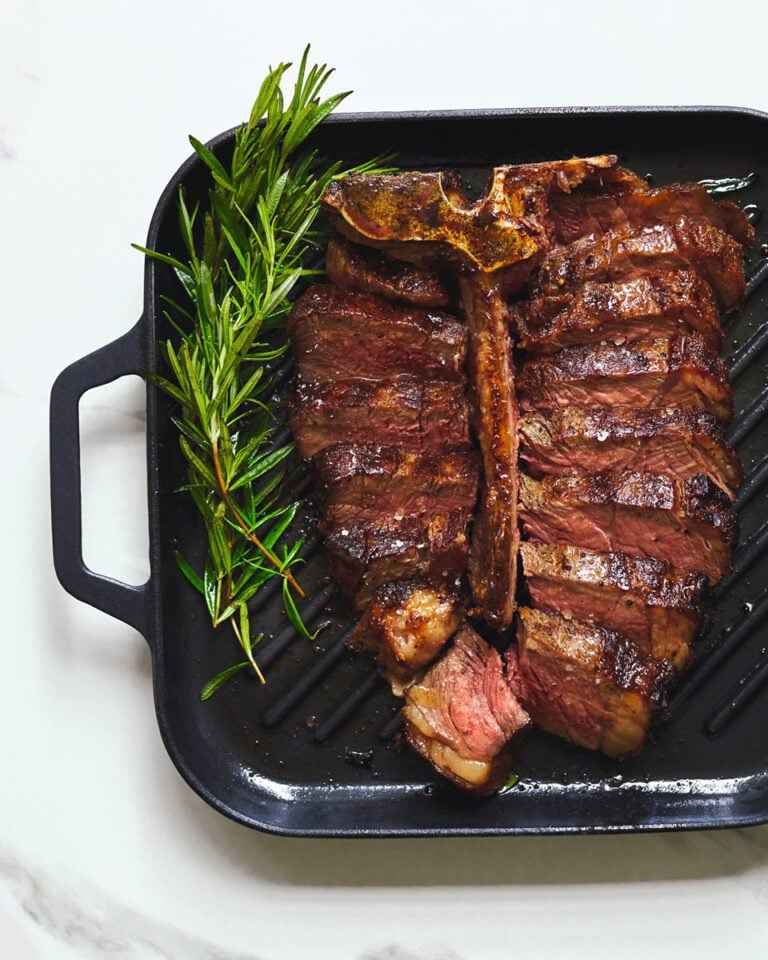
When we buy a pan, we want something that’s built to last. It’s a thing that’s going to get exposed to huge fluctuations in temperature, be prodded, scraped, moved around and filled with all manner of substances, from acidic liquids to abrasive salts. In short, pans take a bit of a beating in our kitchens – so they need to be made of tough stuff to stand up to years of use.
Cast iron is the most hardcore of all the pan materials out there. It’s heavy, it’s thick and you’re never going to scratch it with a metal utensil. It holds onto heat incredibly well, so even when you fill it with food it will hold its temperature. It’s naturally non-stick (when treated well) and it provides the closest thing you can get to that smoky barbecue flavour without the need for actual fire.
So why isn’t cast iron the go-to pan material for everything in our kitchens? Well, there’s a perception, even among those who aren’t bothered by the heaviness of these pans, that they’ll rust, be high-maintenance and are liable to burn food. Those fears aren’t totally unfounded, though they only apply to cast iron in its raw form. Let’s dispel a few myths and get to grips with this wonderful material.
Why we love enamelled cast iron
‘Raw’ cast iron is fantastic but it’s a bit of a lifestyle choice. If you leave it wet for too long it will, indeed, start to rust; acidic ingredients like tomatoes and lemons can damage it; and it needs regular oiling (before and after use) to keep it ship-shape. It’s not something you can throw on the hob, cook with, then leave in the sink to clean later – and that doesn’t suit everyone’s lifestyles these days. Enamelled cast iron, however, takes away the faff.
The core is still made of thick, heavy iron with its heat-retentive properties, but a thin enamel glaze covers the metal, protecting it from rust and acidity. This glaze can come in all kinds of fabulous colours and turns a pan that’s durable but high-maintenance into something that’s just, well, durable.
From enamelled casseroles to griddles
Almost all metal casseroles are made from enamelled cast iron, and their versatility is what makes them so popular. They work on any hob including induction, and you can braise, simmer, fry or bake with them. Use scratchy metal utensils, or leave them soaking and they’ll still look and work like new. They’re a true all-rounder and every kitchen should have one.
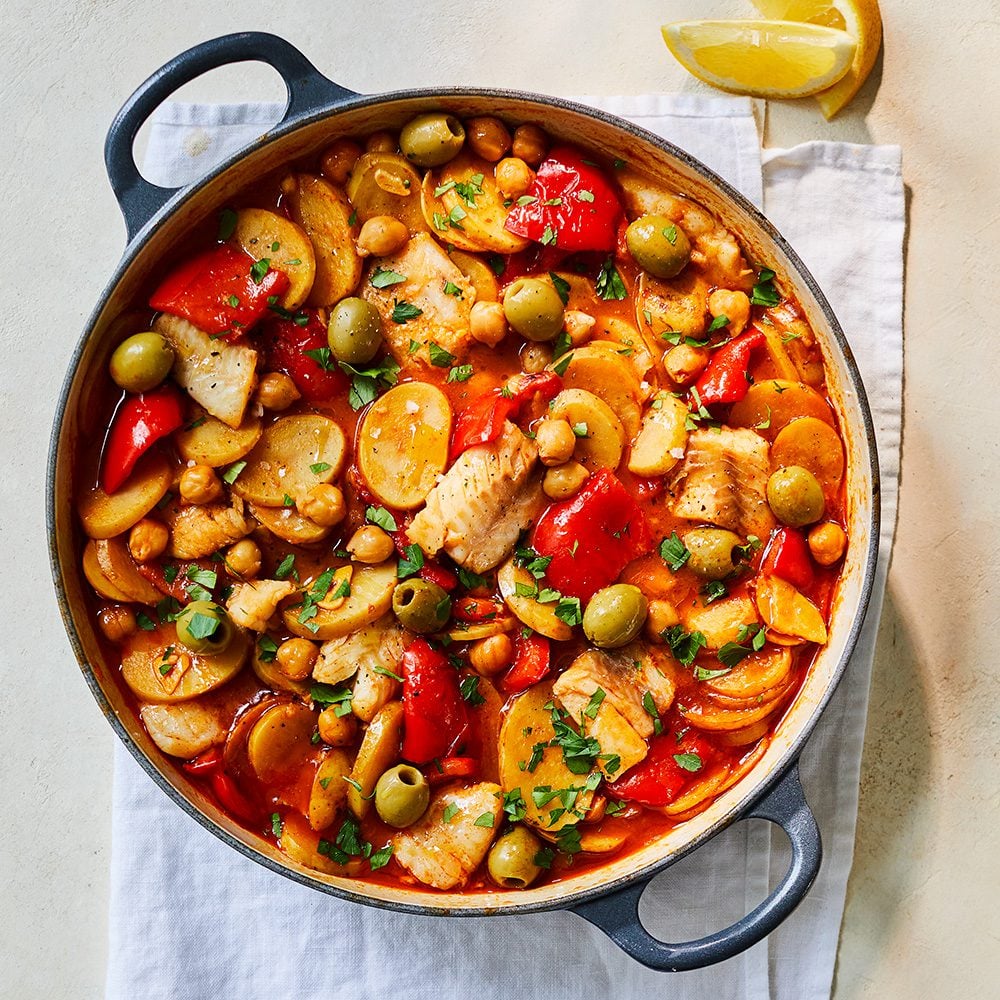
These days, you can get enamelled ridged griddle pans and skillets too – and buying my first one was a gamechanger for me at home. Bold statement incoming: you simply can’t cook a good steak at home without a cast-iron pan. You need a ferocious heat and a pan that won’t drop in temperature as soon as the meat hits it – a brief that cast iron fits perfectly.
Take away the (for me, at least) arduous upkeep and it’s a no-brainer to invest in enamelled cast iron. And instead of the smooth, often cream enamel glaze you find inside casserole dishes, the enamel on a lot of cast-iron griddles is textured and matte, maintaining that desirable ‘raw’ look and feel but with no chance of rusting. Truly the best of both worlds!
Top tips for cooking with cast iron
- Heat your pan properly. Adding food to a cast-iron pan that isn’t hot will cause it to stick and, because it’s so thick, you need to be patient. Let it get hot for at least 3 minutes before you put any oil or food on it.
- Heat up (and cool down) enamelled cast iron gradually. Sudden temperature changes can put stress on the metal.
- Don’t be shy with the oil or fat. This is a good rule to follow in life generally, if you ask me, but with enamelled cast iron it’s important to help prevent sticking.
- It won’t ruin it, but enamelled cast iron will dull if you always put it in the dishwasher. Keep it sparkling by hand washing.
The recipe a cast iron griddle was made for
Bistecca alla fiorentina (florentine porterhouse steak)
When Italians do steak, boy do they go for it. This iconic dish, a porterhouse, is a staple of restaurants in Florence, with the gigantic cut always cooked rare and served at the table for diners to share. Flavoured with rosemary and oil, it’s sometimes served with cannellini beans and, of course, a bottle of good Tuscan red wine.
Before you start cooking your steak, make sure your griddle is smoking hot. It should be making you nervous about setting off the smoke alarm. Putting it over the highest heat for at least 5 minutes should do the trick.
The kit you need
ProCook’s 26cm square griddle (£29; pictured above) has the essential enamelled coating that makes cooking with cast iron a joy. Its superior heat retention helps sear meat and vegetables to perfection and it can be used on all hob types (including induction) as well as on the barbecue. Plus: it’s guaranteed for 25 years.
Discover more expert guides and skills masterclasses in our Be a Better Cook hub, including why steaming is a more versatile cooking method than you might think.
Subscribe to our magazine
Food stories, skills and tested recipes, straight to your door... Enjoy 5 issues for just £5 with our special introductory offer.
Subscribe
Unleash your inner chef
Looking for inspiration? Receive the latest recipes with our newsletter
